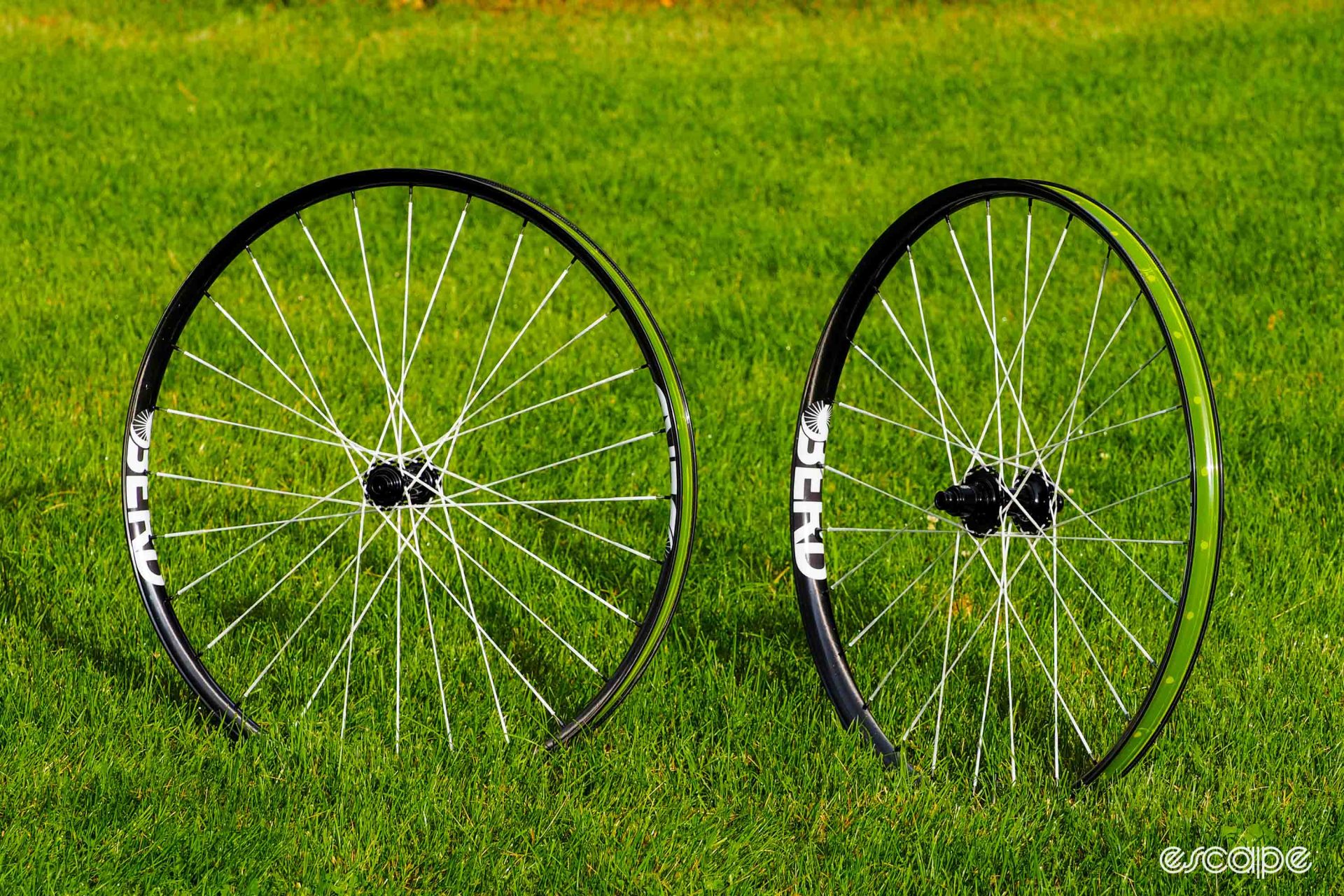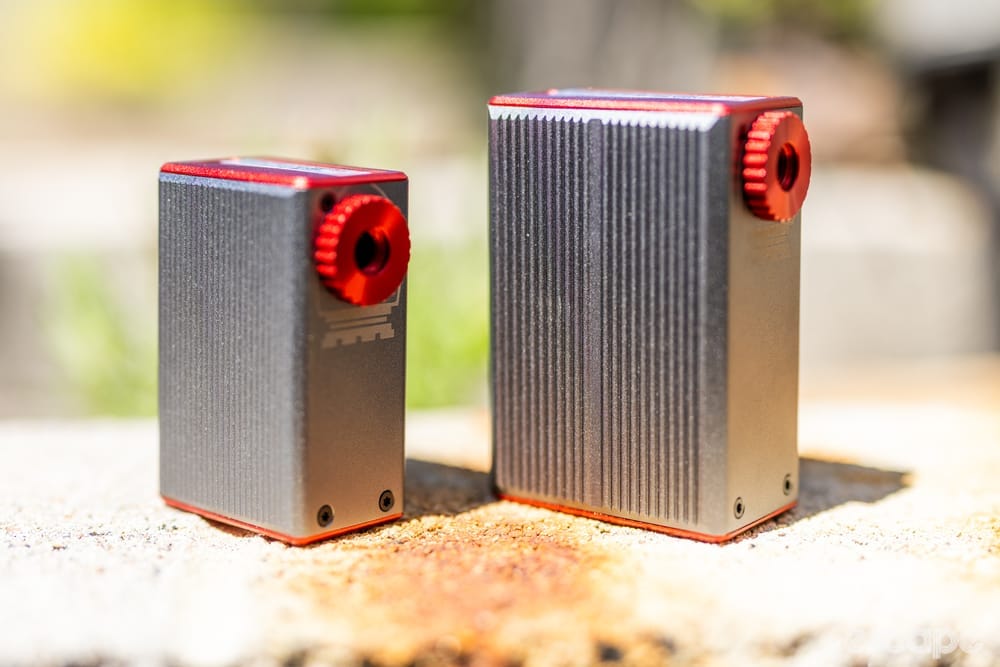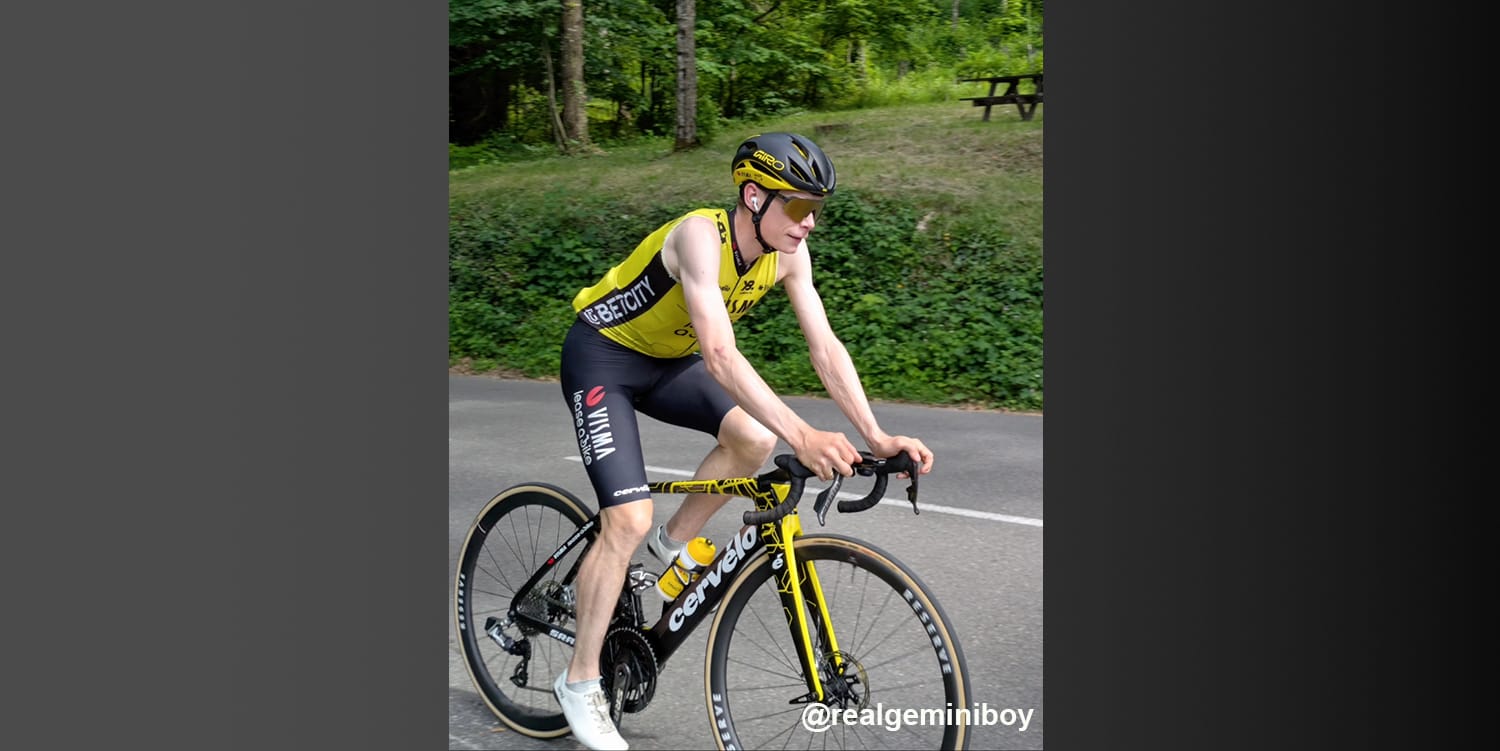Stiffness is often touted as a positive trait when it comes to cycling gear, with the general attitude being that if some of it is good, more of it clearly must be better. Berd’s intriguing Hawk30 carbon fiber mountain bike wheelset extends a big Midwestern middle finger to that notion with an unusually flexible carbon fiber rim and novel vibration-absorbing woven polymer spokes that combine for a distinctly smooth – and very, very fast – setup.
It may be an unconventional wheelset from a brand you likely have never heard of, but boy, do these things rip.
Good stuff: Fantastic feel, reasonably light, tangible boost to comfort and control, DT Swiss-esque rear hub internals, unique aesthetics, impressive spoke weight and strength claims.
Bad stuff: Not as feathery as true ultralights, spokes require a little extra TLC, unproven hub durability.
Shallow, not Sparrow
Regular readers of Escape Collective may recall this is actually the second set of Berd wheels I’ve reviewed over the past few months. The other was the Sparrow, an ultralight gravel setup that – at least on paper – used a formula similar to the Hawk30 with carbon fiber tubeless-compatible clincher rims, Berd’s trademark PolyLight woven fiber polymer spokes, and the company’s custom-made Talon cartridge bearing hubs.
Indeed, the Hawk30 uses nearly identical hubs and spokes (albeit with different axle dimensions and spoke lengths), but where the Sparrows featured a semi-aero rim profile with an emphasis on extremely low weight, the Hawk30 rim is designed first and foremost to offer a soft ride quality on trails. Made in Canada by the folks at We Are One Composites, the rim’s internal width is a healthy 30 mm between the hookless beads to provide good support for the higher-volume tires that are more typically used these days (Berd recommends 2.3-2.7”). To ward off pinch flats, the bead walls are similarly generous at a whopping 3.75 mm-thick.
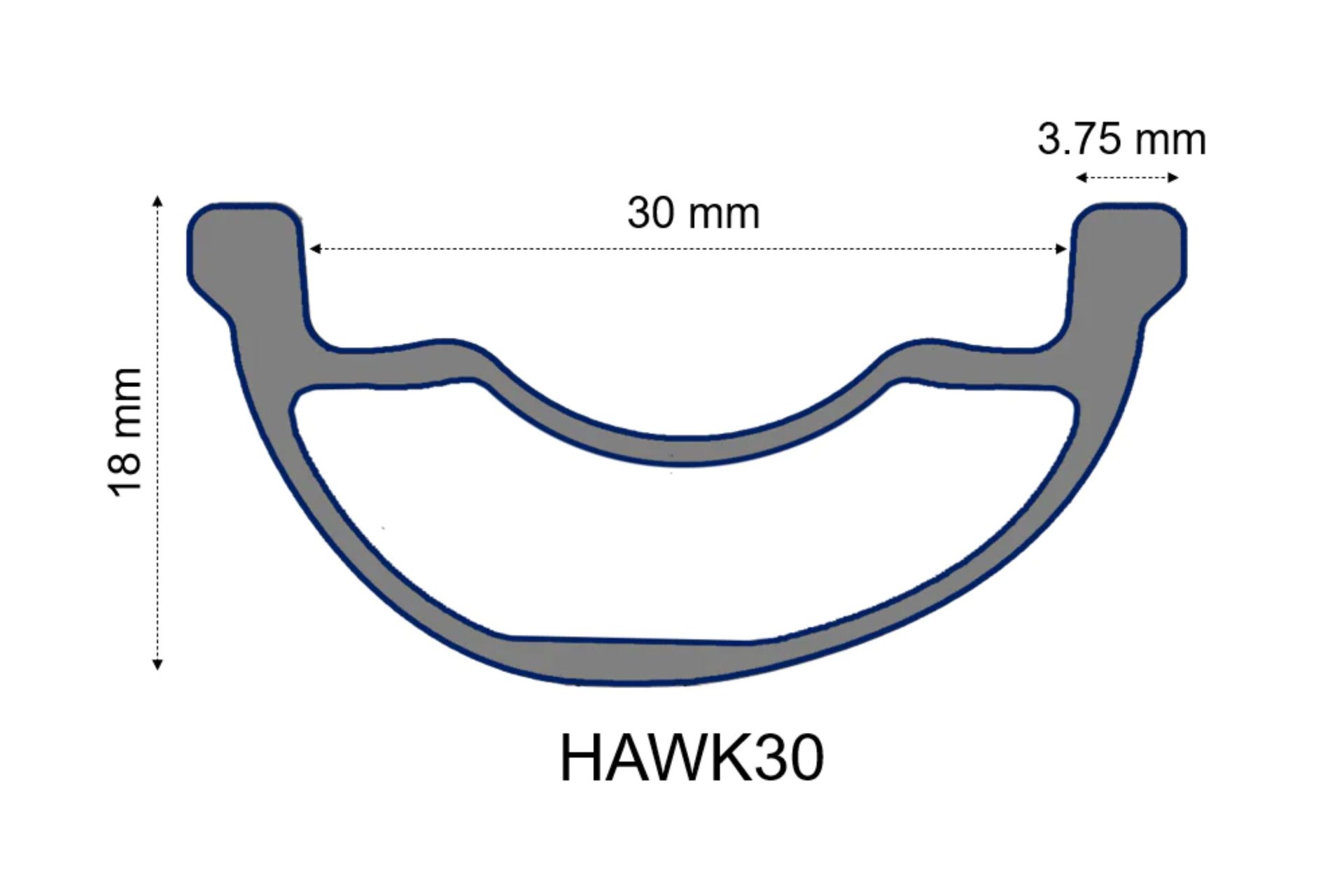
In contrast, the 18 mm rim depth is less than half of the total external rim width, to provide what Berd describes as “engineered radial compliance and high lateral stiffness.”
You can sort of think of the rim cross-section as a very tall I-beam turned on its side. In this configuration, it’d be highly resistant to bending side-to-side, but comparatively flexible up and down.
The Talon hubs are essentially DT Swiss knock-offs, with sealed cartridge bearings and aluminum axles front and rear, and a star ratchet driver design that’s so similar that the parts are actually (though not officially) compatible with genuine DT Swiss bits. Whether the materials of the individual components themselves are just as good as the real thing is hard to determine, but if you’re going to copy a freehub system whose patent has recently expired, this is a prime candidate.
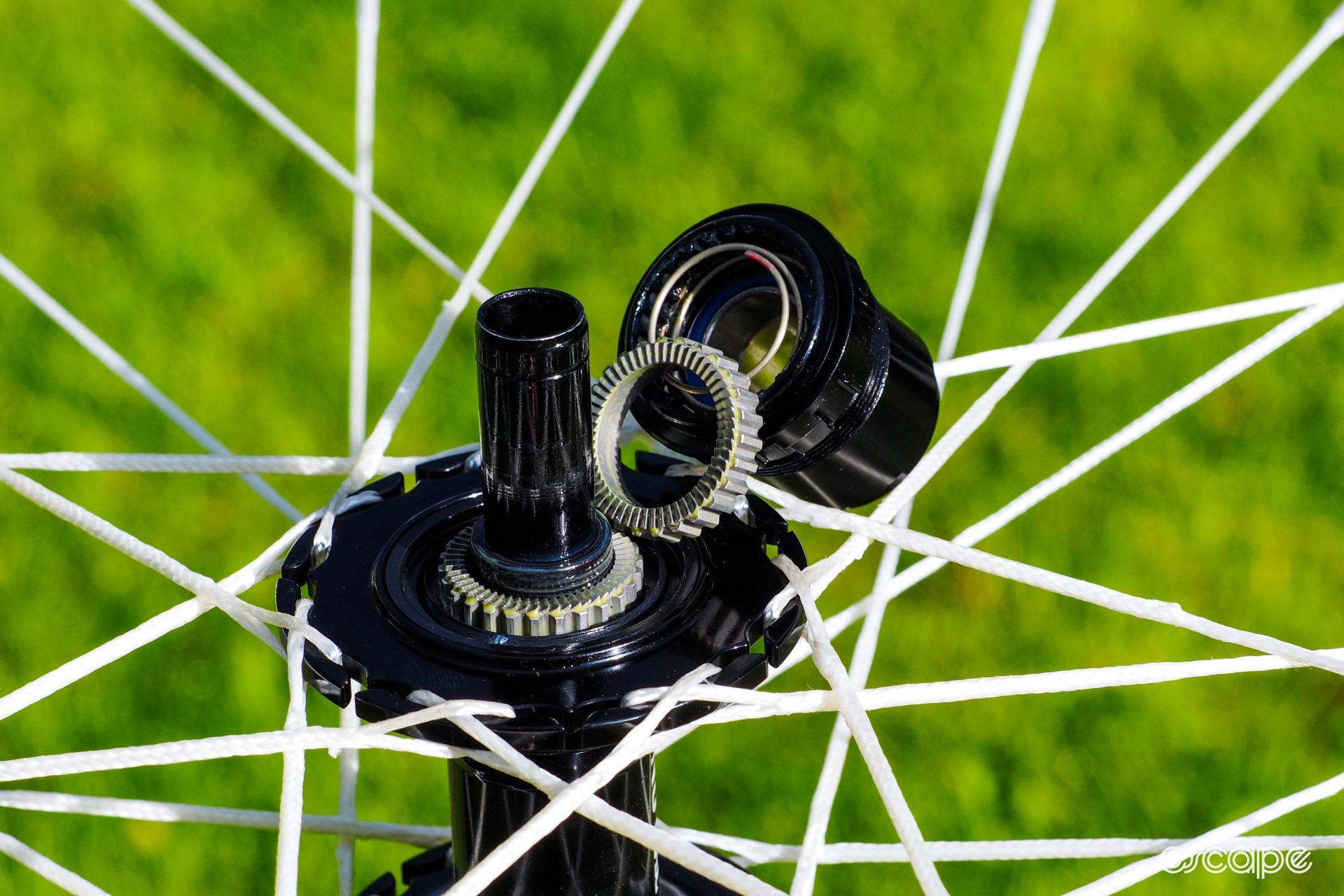
Hawk30 buyers get their choice of 36-tooth ratchets for lower friction, or 54-tooth ratchets for a quicker engagement speed. And if you really want to get fancy, you can upgrade to Industry Nine or Onyx hubs, too.
What really sets the Talon hubs apart are the made-for-Berd aluminum hub shells, whose flanges feature machined-in hooks instead of the usual open holes to accommodate the loops on Berd’s PolyLight spokes (Onyx makes similar custom shells for Berd, too). Those spokes can be built into conventional hubs by inserting little barrel-shaped anchors to keep them from pulling through traditional spoke holes, but for the Talons, those loops just hook directly on to those custom flanges for a more elegant setup.
Now, a refresher on the spokes for those that aren’t yet familiar with these things.
Berd’s PolyLight spokes are made of UHMWPE (ultra-high molecular weight polyethylene), a material you may not have heard of, though you might be more familiar with one of its more common trade names, such as Dyneema or Spectra, both of which are used in applications that require very high strength and low weight like parachutes and sailcloths. Compared to steel, UHMWPE’s strength-to-weight ratio can be as much as tenfold greater. Despite being lighter than Kevlar, UHMWPE is about twice as strong and more resistant to fatigue, as well as more abrasion-resistant. And as a nice little bonus for bicycle wheel applications, UHMWPE has excellent damping properties, too.
Berd fashions those UHMWPE yarns into a woven tubular form, much like a shoelace (and yes, they’re just as flexible). The hub end is formed into a loop, while a threaded stainless steel stub at the other end allows the use of conventional 14-gauge nipples. According to Berd, these fancy spokes only weigh about 2.5 g each, and can save about 100-200 g per wheelset as compared to stainless steel spokes.
All joined together, a set of Berd Hawk30 wheels aren’t nearly as light as those wispy Sparrows. In fact, one might even find the Hawk30’s 1,425 g total weight (637 g front, 788 g rear, pre-taped) to be somewhat average for a set of carbon fiber 29er wheels in this price range. At US$2,095, the Hawk30s are a few hundred dollars less expensive than true ultralights from big brands like the Bontrager Kovee RSL 30 or Roval Control SL – both of which barely cross the 1,200 g barrier – but yet they're also a few hundred dollars more expensive than premium consumer-direct competition like the Hunt Proven Race XC UD, which are within 100 g of the Bontrager and Roval options while being almost a thousand dollars cheaper.
As the best bicycle wheels usually do, though, the Hawk30s feel lighter when you’re riding than their static weight would suggest. But either way, weight most definitely isn’t the point here.
The magic carpet effect
Technophile roadies will have no doubt noticed recent movements promoting the idea that wider tires and lower inflation pressures result in higher speeds and more efficiency since small imperfections in the road surfaces can now be attenuated by your tires instead of your body.
It’s a similar philosophy with the Berd Hawk30s out on the trail, only the effects are more noticeable there than on tarmac.

As I experienced with those Berd Sparrows, there’s also a distinctly well-damped sensation (presumably from the spokes). But whereas the mid-section rim depth of the Sparrow didn’t allow for much rim flex when hitting bumps, the Hawk30’s particularly flat profile delivers a noticeably more planted feel when riding on rough terrain. Even with identical tires set to the same pressures (and on the same bike with identical suspension setups), the Hawk30s are tangibly smoother-riding than other high-end cross-country or trail wheels I’ve ridden.
Between the damping effect of the spokes and the rim profile’s radial flex pattern, the best word I can find to describe the ride sensation is “quiet."
That distinctive ride quality doesn’t seem to come at the expense of other performance characteristics, either.
Achieving this sort of ride comfort just through tire pressure would normally result in vague handling as the casing folds underneath you through corners. However, there’s no such downside with the Hawk30s since you’re still running your normal setup; it’s the rim and spokes that are providing the comfort here, not the tires. There’s perhaps the slightest bit of lateral flex under particularly hard cornering, but the overall handling characteristics are otherwise unchanged. Keep in mind, however, that I’m about 72 kg on a bad day, so substantially heavier riders might have a different viewpoint (though Berd specifies a rather impressive-sounding 127 kg / 280 lb rider weight limit for these).
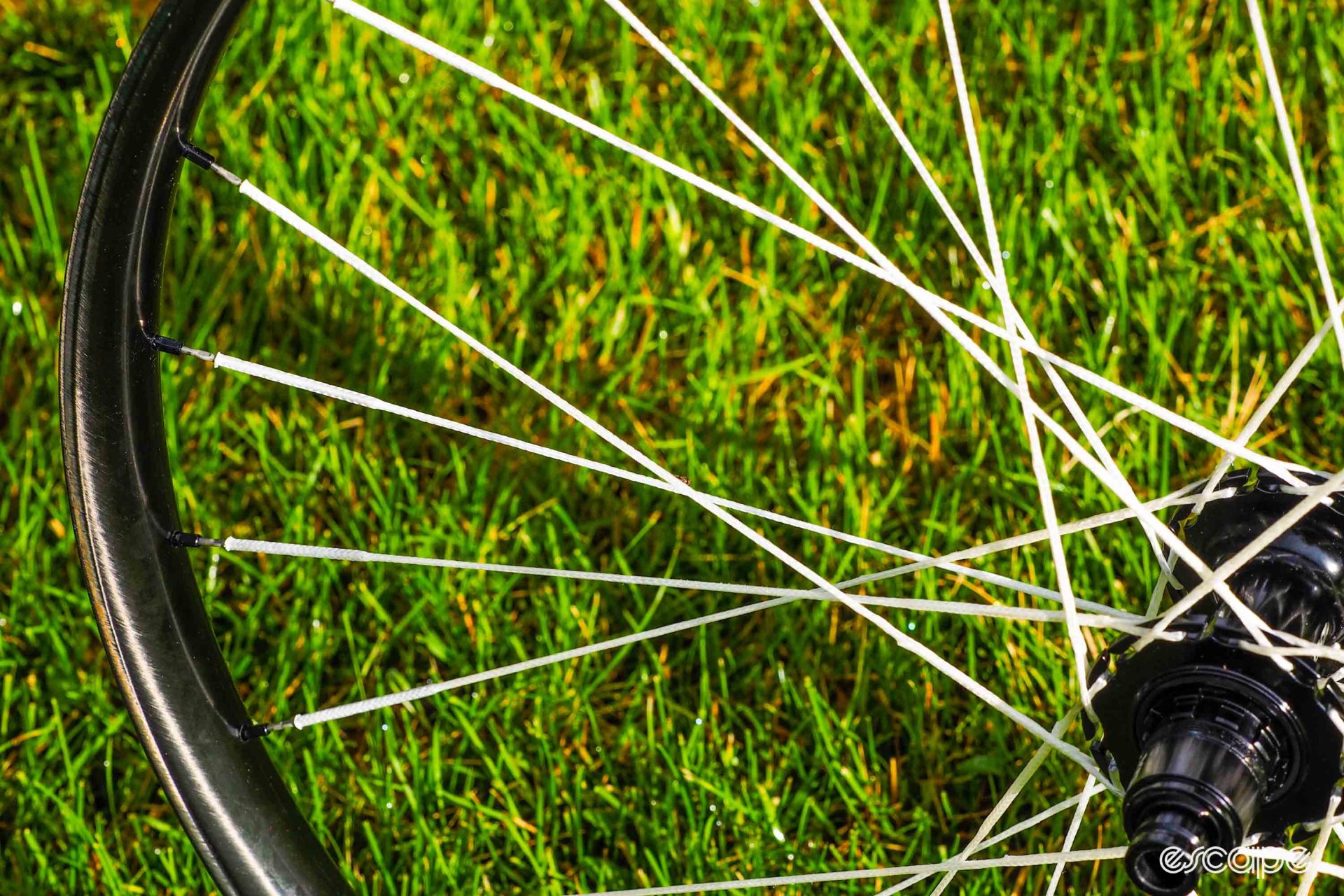
There’s no sense of torsional wind-up that you might expect from plastic spokes, although I won’t say the Hawk30s feel identical to a conventional wheelset, either. They’re quick to accelerate and highly responsive under power like you would expect from wheels built with steel spokes, but there’s also a subtly springy and lively feel to them that I generally found very appealing on the trail.
Though my anecdotal experience is hardly conclusive, the Hawk30 rims seem reassuringly impact-resistant, too. Hard bottom-outs on sharp rocks sound (and feel) worrisome as usual, but at least in my case, they result in little more than an uneventful thud. Perhaps it’s that flexible rim simply moving out of the way under the load, or something about that wide rim edge distributing the impact force across a larger area as intended. Either way, I found it didn’t take long before I stopped worrying too much about pinch flats.
Too much fiber in your diet?
As remarkable as the Hawk30s feel on the trail, some other traits still give me pause – but just a little bit.
My local riding terrain is notoriously hard on gear, with a plethora of chunky rocks conspiring to ruin your day; almost no ride ends without that telltale sound of one of them flicking up into the spokes. Berd insists its PolyLight spokes are more resistant to both impacts and abrasion than steel ones, but we’re still talking about woven fiber here. That said, while their scarcity likely plays a part in this, it’s difficult to find even a mention of a broken or damaged spoke in internet forums under normal riding conditions so there’s certainly an element of trust required here.
That said, even Berd admits that its spokes require some TLC – namely, a periodic re-tensioning given UHMWPE’s tendency to stretch very slowly over time (more specifically described as “creep”). I didn’t have to deal with this on my loaner wheels, but I also only had them for a few months and only weigh about 70ish kg, so again, YMMV. Perhaps more worrisome, though, is that Berd explicitly recommends against leaving its wheels inside a vehicle on a hot day. Those spokes won’t melt or anything like that, but even fancy plastic is still prone to softening given enough heat, and sitting in those conditions for a sufficient period of time might warrant a quarter-turn on the nipples all around. Thankfully, Berd’s spoke design trues and tensions just like a bladed steel spoke.
And yeah, if you’re wondering how these white (white!) woven fiber spokes might look over time, you can certainly expect them to get a little grungy. A good washing can bring back much of their initial brightness, but you can think of these like white socks in that they’ll never look quite as crisp and clean as when they were new, no matter how many times you toss them in the wash with bleach. Berd thankfully also offers complete builds with the spokes pre-dyed black – and if you want to add a little color to your life, there are six other hues available in a separate dye kit.
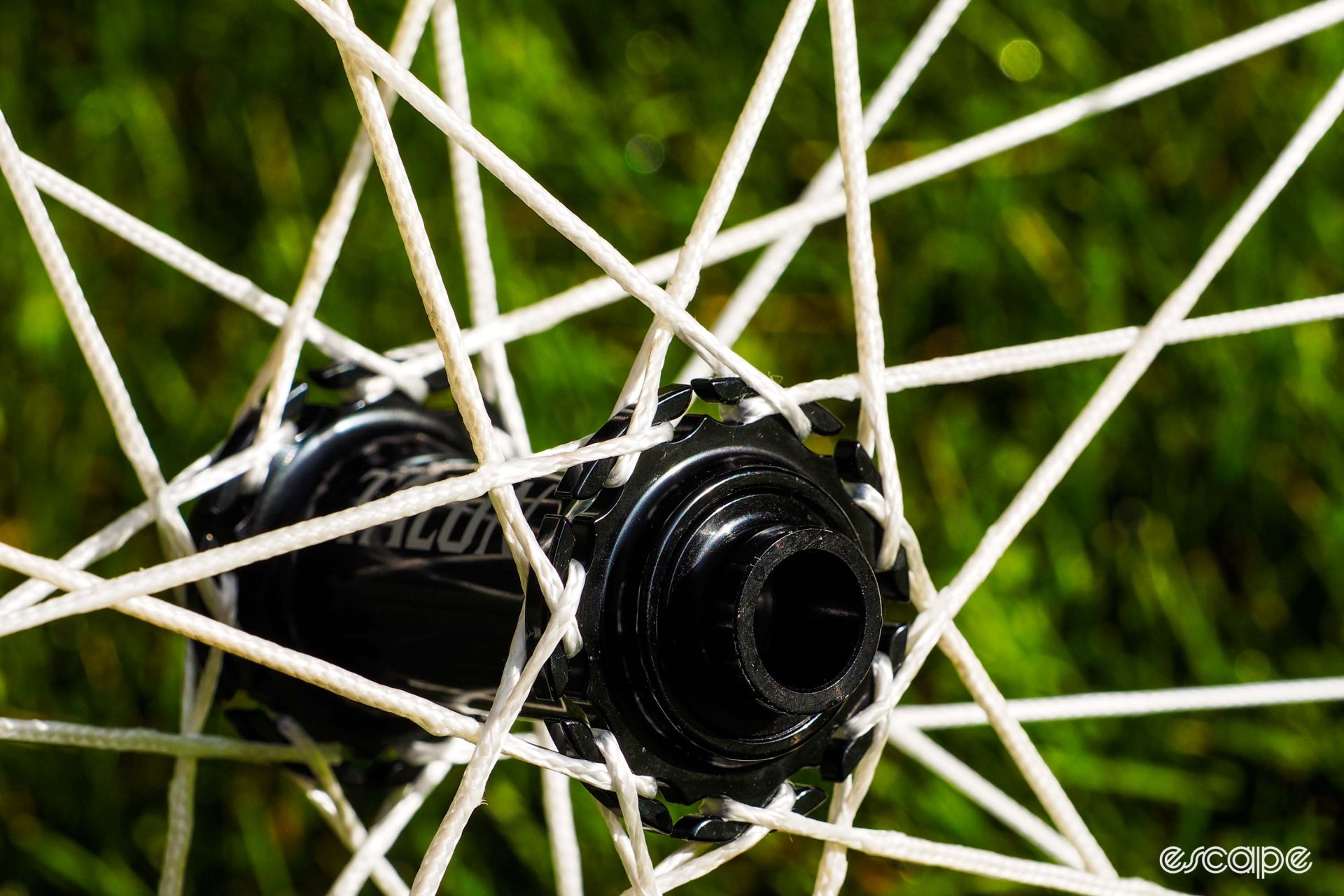
Finally, as much as I’m generally a fan of DT Swiss’s traditional star ratchet driver setup – or good knockoffs, like these Talons seem to be – riders who prefer particularly quick freehub engagement may want to tick one of the other boxes in the pull-down menu as even the 54-tooth ratchet ring option tops out at 6.67°. Industry Nine’s Hydra hubs will bring that down to 0.52°, while Onyx’s sprag clutch design will provide effectively instantaneous engagement with the added bonus of completely silent freewheeling. And while the bearings on this set of hubs were pleasantly smooth, the ones on the Sparrows I tested were disappointingly notchy, which makes me wonder about the bearing bore dimension tolerances on Berd’s Talon hubs in general.
Just far enough off the beaten path
I hear you; I’d be reluctant to drop this kind of money on a brand I’d never heard of, either. But if you subscribe to the idea that smooth is fast when it comes to riding off-road, these are about as smooth as it gets. Six years after their initial debut, Berd’s unusual spokes also now have a pretty well-proven track record, and combining them with the distinctly soft-riding We Are One Composites rim yields a mountain bike wheelset that truly feels different from most anything else on the market. Weight weenies might not be blown away when there are other options that lop another 200 g off of these things, but when it comes to riding off-road, I’d argue that weight is far from the most important factor that determines performance.
Long story short: after now testing two different sets of Berd wheels, I'm sufficiently convinced of the spoke technology that I'm about to send some hubs and rims their way to build up for me. Dingy t-shirt, here I come.
More information can be found at www.berdspokes.com.
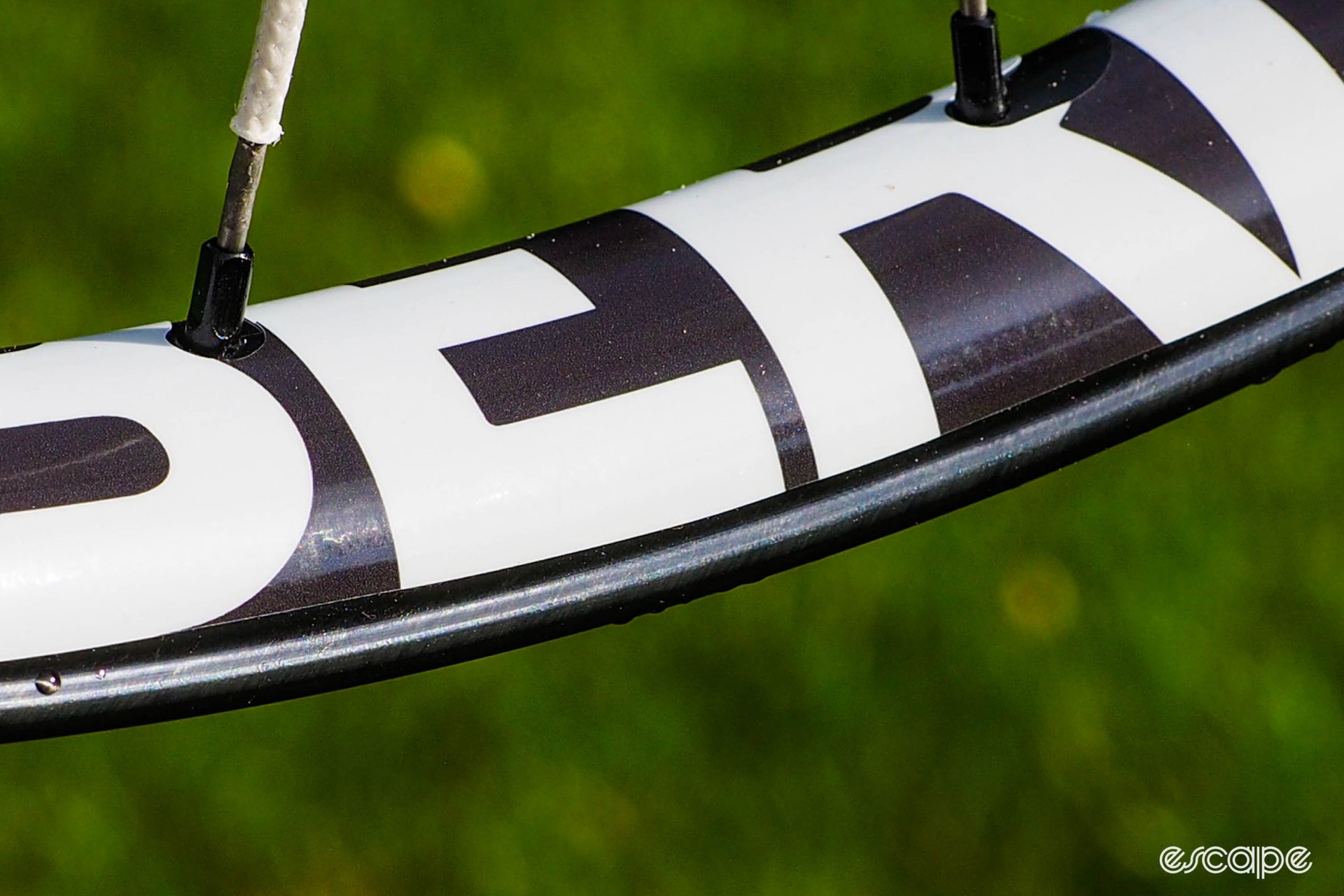

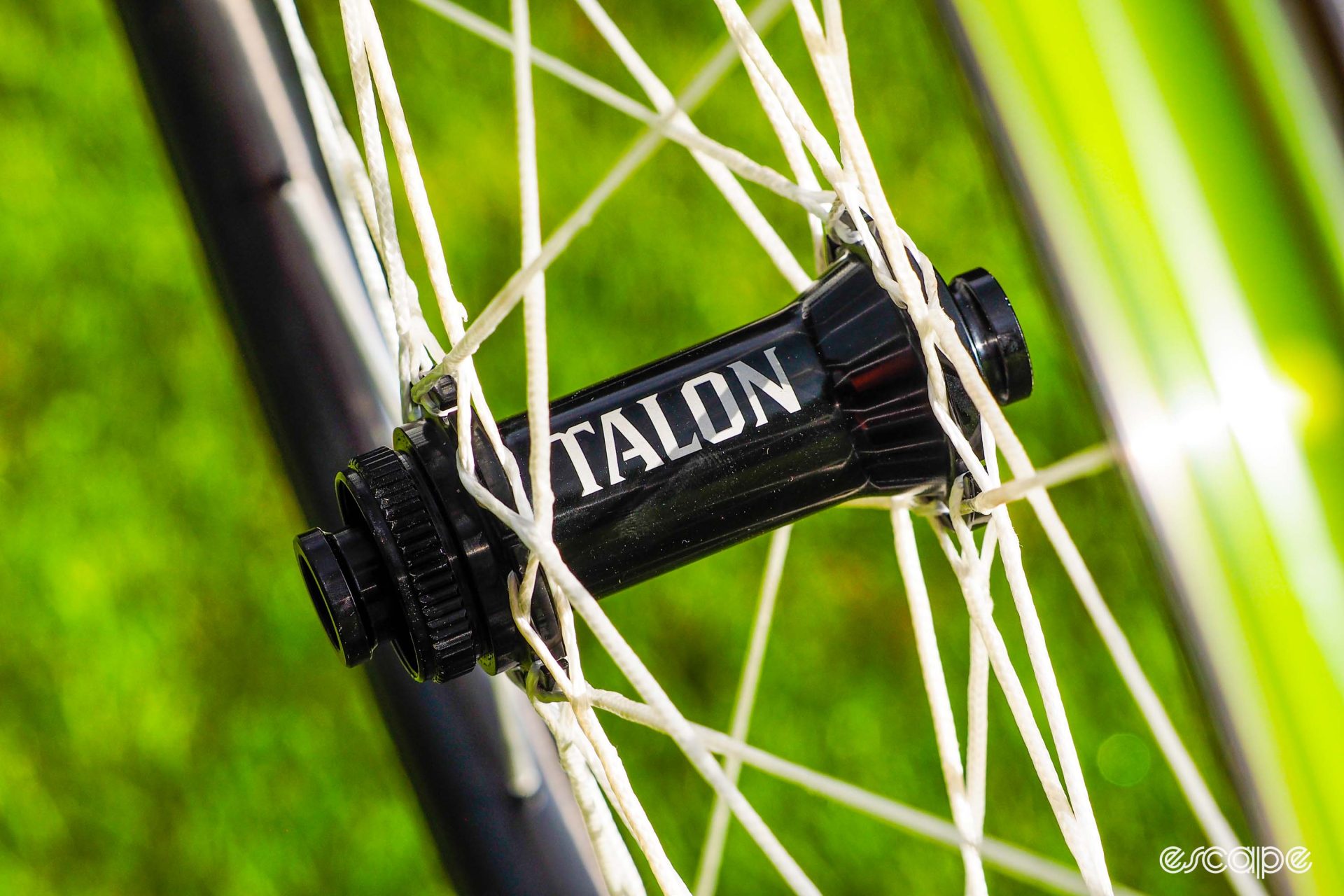
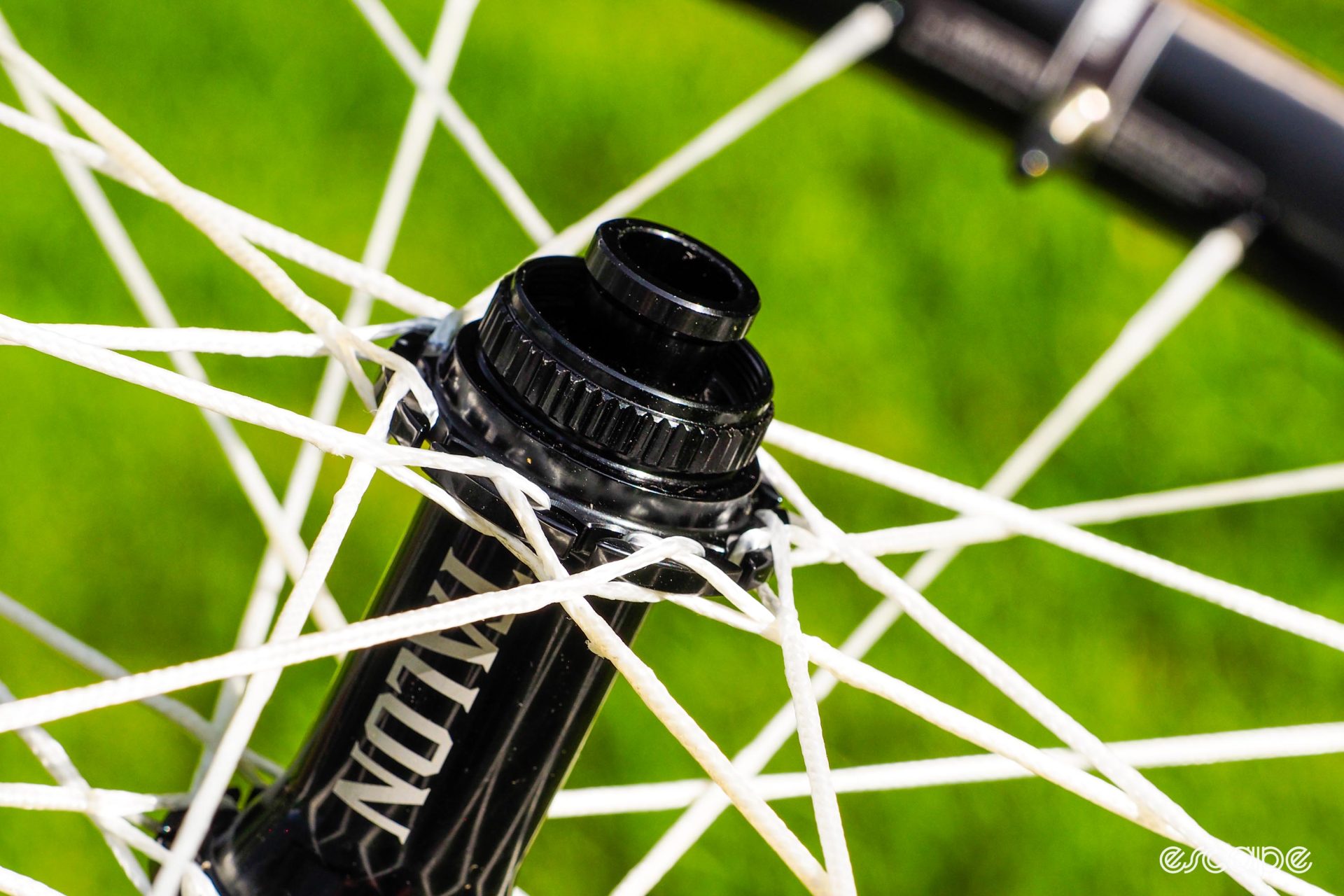

Did we do a good job with this story?

